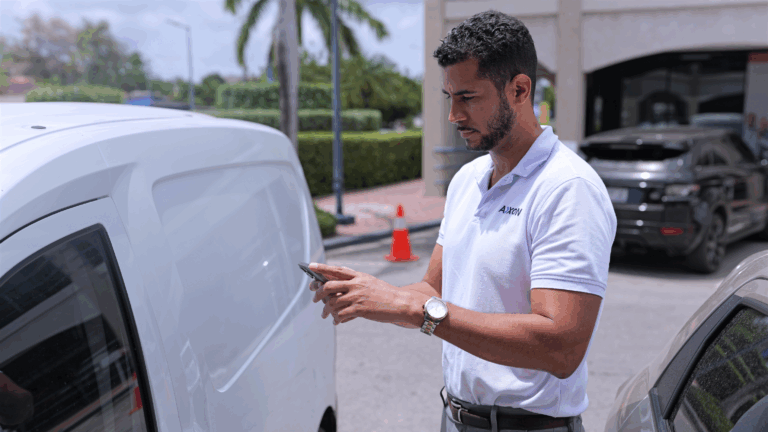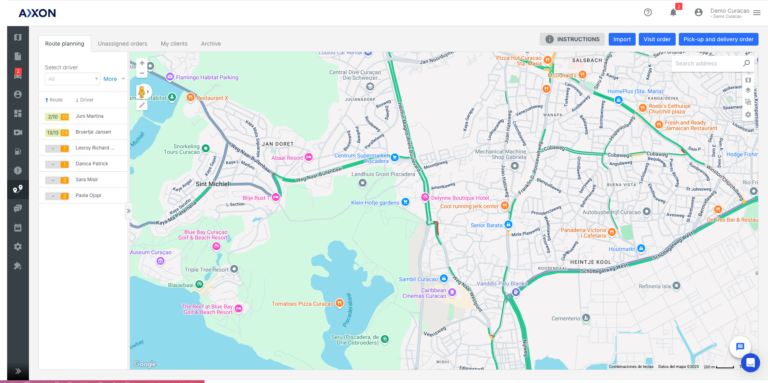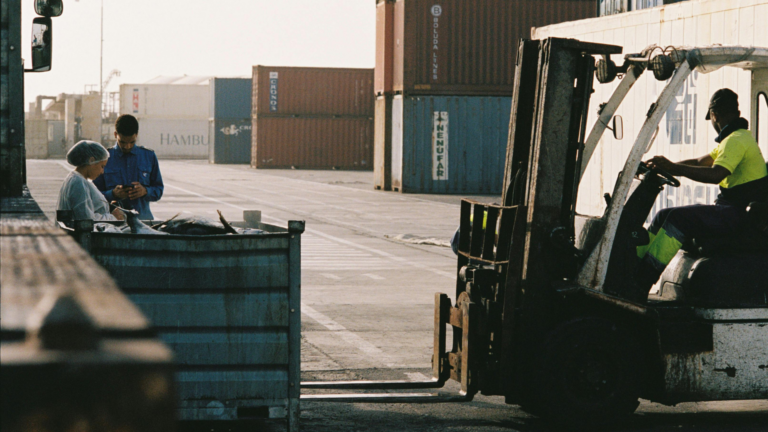Preventing Collisions with Connected Dashcams
The costs associated with these accidents, both financial and emotional, are staggering. But what if there was a way to reduce the number of collisions and make our roads safer? This is where connected dash cams come in.
In this blog, we'll explore the capabilities of these innovative devices and how they can provide businesses with a cost-effective solution to prevent collisions, improve safety, and protect both their employees and assets. So buckle up, and let's take a closer look at how connected dashcams are changing the game for businesses everywhere.
What are connected dash cams and how do they work?
Connected dash cams are advanced in-vehicle cameras that are connected to the internet and provide real-time video and data streaming. They are designed to be used in fleet vehicles, such as trucks and delivery vehicles, and commercial vehicles to help improve road safety and optimize fleet management.
Here at Axxon, our innovative connected dash cams are not designed to continuously record video footage from within the vehicle, they're designed to intelligently detect certain unsafe driving behaviors. Upon recognizing such behaviors, these cams instantly send real-time audio alerts to the drivers. This immediate feedback mechanism empowers drivers to correct their actions on the go, significantly helping in avoiding and preventing potential collisions. All recorded data is securely transmitted to a cloud-based platform for review and further analysis.
The benefits of using a connected dash cam:
Connected dash cams offer a range of benefits for fleet management and road safety. Firstly, they provide real-time alerts, allowing for continuous monitoring of driver behavior and performance. This data can be used to identify and address dangerous driving habits, such as distracted driving and reckless behavior.
Additionally, the footage can be used for training and coaching purposes, helping drivers improve their skills and reduce the risk of accidents.
The cameras provide evidence in case of accidents, helping to protect against false claims and improve insurance outcomes. In short, connected dashcams provide a comprehensive solution for fleet management, offering real-time monitoring, improved road safety, and valuable operational insights.
How to prevent collisions with a connected dash cam?
Connected dash cams can help prevent collisions in several ways:
- Notifications for Safety: Instead of constantly keeping an eye on drivers, managers can utilize our connected dashcams to set up specific notifications about driving habits that can lead to accidents. Get alerted for behaviors like distracted driving, using a phone, eating while driving, speeding, and much more so you can address these issues promptly.
- Driver Feedback: Providing drivers with immediate feedback based on these notifications, connected dash cams aid in refining driving habits, drastically reducing accident risks.
- Data Analysis: The data collected by the dashcam is invaluable. Fleet managers can deeply analyze this information, identifying trends and patterns in driving behaviors. Recognizing these can lead to implementing effective strategies to further reduce the risk of accidents.
- Improved Road Safety: With our connected dashcams in place, not only are the roads made safer due to constant driver behavior analysis and feedback, but the overall driving environment within the fleet becomes more conscious and alert, ensuring a considerable drop in accidents and collisions.
Overall, by using a combination of real-time monitoring, driver feedback, safety alerts, data analysis, and improved road safety practices, connected dashcams can help prevent collisions and improve overall safety on the roads.
Tips for choosing the right connected dash cam for your needs
When selecting a connected dashcam for your fleet, there are a number of important considerations to take into account. Firstly, compatibility is crucial to make sure that the dashcam integrates well with your vehicles and existing data and storage systems. The video quality of the dashcam is also vital, as you want to ensure that the footage captured is of high resolution, captured at a wide angle, and stabilized to ensure that you have clear and usable video footage.
Data management is another important factor, as you want to be able to store and access footage easily and have the ability to stream and analyze data in real time. Additionally, driver feedback can be a useful feature to have, with the dashcam providing alerts to the drivers about dangerous driving habits, helping to improve driver behavior and overall safety.
Privacy and security are also important, as you want to ensure that sensitive information and the privacy of drivers are protected. The cost of the dashcam and any monthly or annual fees must also be taken into account when making your decision, as you want to make sure that the dashcam fits within your budget.
Finally, user-friendliness is important, and you should select a dashcam that is easy to install and use, and has a straightforward user interface.
By taking all of these factors into account, you can choose the right connected dashcam that is best suited to your fleet's needs and budget.
The future of collision prevention technology
The future of collision prevention technology looks bright, as advancements in technology are leading to the development of innovative solutions for improving road safety. Some of the key trends in this field include the integration of Artificial Intelligence (AI) and Machine Learning (ML) in collision prevention systems, the increasing use of sensors and cameras, and the development of advanced driver assistance systems (ADAS).
AI-powered systems can process data in real time, detect patterns and provide critical insights, enabling drivers to make informed decisions on the road. The use of cameras and sensors has also grown, providing real-time visibility and data that can be used to inform drivers and prevent accidents.
ADAS, such as Adaptive Cruise Control, Lane Departure Warning, and Blind Spot Detection, are also becoming increasingly common in modern vehicles, and their functionality and features are constantly being improved.
Connected vehicles are another trend that has the potential to revolutionize road safety, as the real-time exchange of data between vehicles can help to identify and prevent potential collisions.
In conclusion, the future of collision prevention technology is exciting and holds a lot of potential to make our roads safer for everyone. As technology continues to advance, we can expect to see even more innovative solutions for preventing accidents and saving lives.
Leading the Road Safety Revolution
The use of connected dash cameras has emerged as a game-changer in the transportation industry, providing a safer and more efficient means of protecting drivers, vehicles, and cargo. These innovative technologies offer real-time monitoring and insights that help businesses optimize operations, reduce risk, and protect their drivers, customers, and assets.
By choosing the latest technology in connected dash cameras, businesses can take their safety measures to the next level, and stay ahead of the competition. With its advanced features, businesses can easily identify and prevent potential collisions, making our roads safer for everyone.
Take the next step
At Axxon, we are dedicated to providing the latest technology in connected dashcams and solutions that help businesses stay ahead of the curve in road safety. Whether you're a trucking or delivery company or any other type of business managing vehicles, we have the expertise and technology you need to take your safety measures to the next level. So, don't wait any longer, take the next step and join the road safety revolution today!



